Famous British Psychics Omaha Tour Holland Performing Arts Center
The Victorian era was a foreign fourth dimension which was not nearly as restrained and prudish as reputation holds. It was a fourth dimension when everyone was exploring the world around them, and sometimes, that meant looking at the earth they couldn't run into, either. It saw the nascence of Spiritualism, the popularity of seances and fortune-telling, and the creation of secret societies. Occasionally, communing with the Devil or astral projection to other planets was on the schedule.
10 Annie Horniman
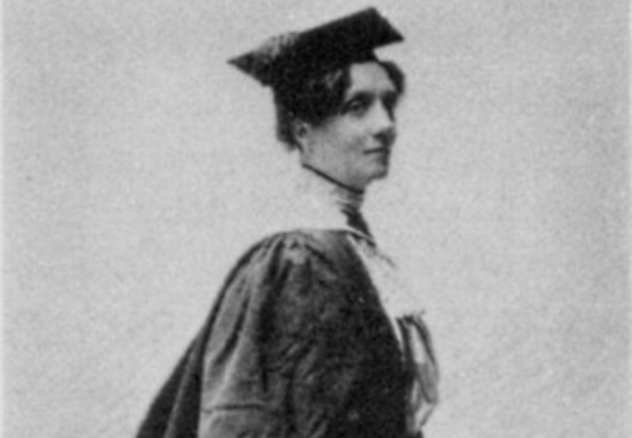
Annie Horniman had a huge influence on British theater; that is absolutely non upwardly for debate. Originally from Dublin, she was largely responsible for creating the theater scene in Manchester, with the goal of bringing performing arts of all kinds to all people, regardless of income or social standing. She did so with her family unit fortune—hers was the kickoff to sell prepackaged tea.
Annie was a huge believer in tarot and used the cards for guidance in all of her business decisions. It must have worked, considering other English cities yet model their theaters on her programme designs. However, her 1894 venture in the Avenue Theatre in London was a complete financial nightmare.
Annie as well believed that she could astrally project herself, and she frequently stopped by Saturn for a visit and a conversation with the locals. A lapsed member of the Hermetic Society of the Gold Dawn, Horniman was sent on a series of astral projections in 1898. She believed that she was visiting all the planets. Note that astronomy was hugely popular at the time. New technology was assuasive people to see more than and more than more than of space, and books like The State of war of the Worlds were being published.
Horniman and her astral projection colleague, Frederick Leigh Gardner, kept incredibly detailed notes about all the planets that they visited, recording everything from what kind of atmosphere they found to some of the conversations that they had with the life-forms they met. Traveling to each planet required a rather elaborate, symbolism-filled ritual—for Saturn, that meant using things like the Lesser Invoking Hexagram of Saturn and traveling along indigo rays. In one case they got there, Annie records, they met an armor-clad angel who told them all about their civilisation. The Saturnites were an ancient people, and they were dying. He gave them a bout, and even though he made them invisible so they wouldn't frighten anyone, the Saturnites were able to feel their presence.
In contrast, Jupiter was shrouded with protections and illusions, and it was much, much more than difficult for them to summon their beautiful female guide, who was saddened by the state of things on World.
Information technology'south unknown whether Horniman and Gardner truly thought their journeys were real. It's suggested that their writings were more an exploration of lite and sense than an bodily belief in a concrete journey, but it's hard to tell.
nine Madame Blavatsky
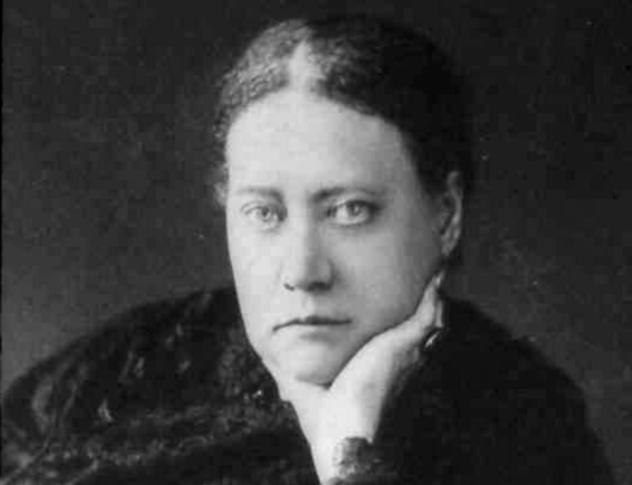
Even as a child, Helena Petrovna Blavatsky was a little foreign. She claimed to take invisible friends that she called her "hunchbacks," and she was frequently institute belongings and stroking birds until they vicious asleep.
As a young woman, she married briefly and then left her new husband to wander the earth for a decade. When she reemerged into society, information technology was reported that she had gained all sorts of spiritual and telepathic abilities, from controlling winds indoors to telekinesis. Past 1873, she was in New York, and by 1875 she had founded the Theosophical Society. The Lodge had some pretty lofty goals, including uniting mankind in a universal brotherhood that had truly, completely explored the divine, mystical powers she believed all humans possessed.
Soon, the society got the attention of the British Order for Psychical Inquiry, and their estimation and report on the phenomenon—or lack thereof—was less than stellar. After a iii-month investigation, they claimed the whole thing was nothing but fraud and sleight-of-hand trickery. Information technology'south not that they didn't believe in the occult; they just didn't believe that Blavatsky was accurate.
Somehow, the society survived, and in 1888, Blavatsy published what would exist her masterpiece, a volume chosen The Secret Doctrine. It's just equally bizarre as you lot might expect. She talks most the nascence of the races of mankind and says that the 4th race, the Atlantean Race, was the 1 responsible for developing sin and breeding monsters. While the First Race was the color of the moon, the Second Race was gold, and the 3rd Race was ruddy, the 4th "became black with sin." Lemuria and Atlantis were both also real and would exist proven as such. They were ruled past demigods in human form, and all the issues started when an evil demigod rose to power and turned the Atlanteans into evil magicians.
8 Annie Besant And Charles Leadbeater
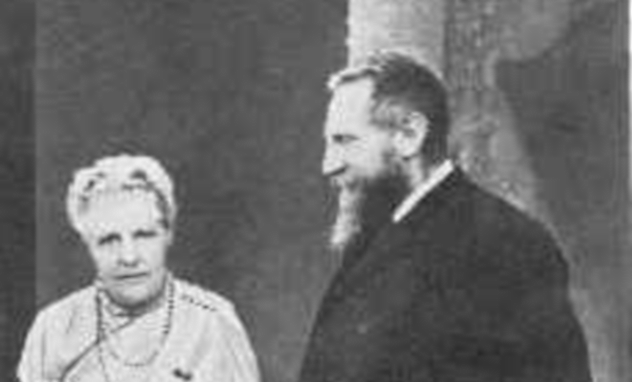
Besant and Leadbeater were outspoken supporters of Madame Blavatsky and the London Theosophical Society, to the indicate where they about entirely turned their backs on their sometime lives once they stumbled into the occult. Besant had already separated from her clergyman husband and father of her two children, largely because of her anti-religious views. Leadbeater had been an Anglican priest when he converted to the Theosophical Society, specifically citing that ritual had made the original message of Christianity effectively nonexistent. And then he headed off to India, and information technology was there that they both embraced the idea that elements of Hinduism and Buddhism could be combined to achieve the otherworldly.
Later on, they would partner to write Thought-Forms, a pretty bizarre work that was grandiose in every sense of the discussion, and would capture a few dissimilar things, depending on how you interpret the volume. Their contemporaries understood the work as depicting everything that an agreement of the other world would open up, while today, we recognize the same ideas with a different proper noun: synesthesia.
The book contains a series of illustrations that the authors claim people accept actually seen. They're pictures of emotions and sounds; they're non-visual things made visual. Music was given color and a shape, shown pouring out of a cathedral. Information technology was a powerful endeavor at making the abstract visual, and it'southward not just an occult phenomenon—it's a mental one that we admittedly don't sympathize even today.
It wasn't just simple emotions or images that they were documenting, either. They assigned colors and shapes to a wide range of emotions and intentions, from the quest for intellectual knowledge to the desire to embrace everything in the cosmos; that want is majestic.
7 Philippe De Lyon

Rasputin is possibly one of the virtually notorious occultists and figures of the Russian courtroom, but the stories of his predecessor are no less incredible.
According to the story, Phillippe Nizier-Anthelme Vachod was built-in to parents Joseph and Mary on April 25, 1849. It was said he acquired his mother no pain, and she delivered him while singing and overcome with joy. The storm that had been raging stopped, and a shooting star heralded his inflow. Clearly, the stories imply that he was something special.
Small miracles were said to follow him around, and by 1874 he was working in a chemist's shop in Lyon, France. It was there that he got a reputation as a healer, curing affliction wherever he went and eventually being dismissed from the school for fraud. Past that time, though, discussion had spread, and he welcomed anyone in demand into his dwelling, where he healed and cured people no matter what their affliction.
One story in particular tells of how powerful Phillippe was reputed to exist. Two doctors are leaving the bedside of a boy who had just died, lamenting how they were unable to save him. Philippe enters the room, where the male child has already been dead for two hours—the boy does, of course, wake upwards.
Philippe conjured an virtually Christ-like image and belief in his abilities. The stories that keep with him have a powerful undertone, as he ever asks for something from those he heals; whether it be the forgiveness of a debt or a halt to gossiping, the general idea behind his work is that if y'all're a practiced person, God will help. He was, sadly, less successful when information technology came to his own children, though, losing a son in infancy and a girl to lifelong ill wellness. When asked to save his children, he claimed that his daughter'south death was postponing an event that would have been devastating for the planet.
Philippe was understandably sought after, and eventually had the ear of the Russian court. There were plenty of people that didn't corroborate of him or his teachings, from doctors who claimed he was a fraud to others who claimed he was a spy of some sort. He did, however, have a group of disciples that he taught, and he has long held a place in between organized religion, the occult, and spiritualism.
half-dozen Alexis Vincent Charles Berbiguier De Terreneuve De Thym
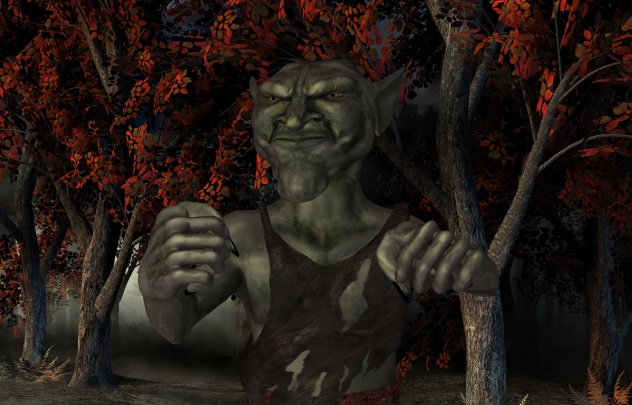
We're not quite certain what exactly was wrong with Alexis Vincent Charles Berbiguier de Terreneuve de Thym, but his writing makes it pretty clear that he was suffering from some kind of mental illness. Unfortunately, science and psychology didn't accept the tools to truly assist him, and he was sent from one occultist to another.
In 1821, he published a 3-volume autobiography which was completely unlike any life story that a rich Frenchman had written before. The volumes detailed his constant struggle with what he called "hobgoblins." According to Berbiguier, he had killed so many of them that he had earned the title "Scourge of Hobgoblins," but it turns out that killing them but makes them even madder.
While living in Paris, Alexis saw several doctors and clairvoyants who attempted to treat him in a variety of unlike ways, from mesmerism to consultations with the tarot cards. In the meantime, the hobgoblin attacks continued. Eventually, Alexis became convinced that his doctors were ambassadors of the hobgoblins, and they'd washed something to make his problem worse. He recognized doctors for the traitors that they were and increased his hobgoblin-killing efforts. He filled his rooms with hobgoblin-killing plants and kept glass bottles to trap them in, and he did indeed trap them by the thousands.
Those around him (whether they were doctors, professors, students, or animals) became, in Alexis's heed, hobgoblins in disguise. In that location were demons, too—a local druggist was actually Lilith, and a dr. was Moloch. Berbiguier would spend his unabridged life haunted by the hobgoblins.
5 The Fox Sisters
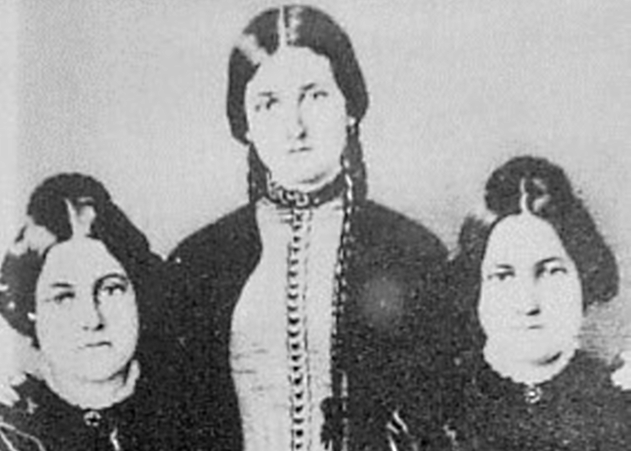
Spirituality got a foreign, strange beginning at the easily of three teenage sisters from Upstate New York. On March 31, 1848, the Fox sisters, Maggie, Kate, and Leah, made their first demonstration of their so-called channeling abilities. They claimed that the spirit of a peddler was present in the firm, and they did the now-familiar routine of request questions that were answered past a series of knocks. They headed to Rochester and then on to New York City, where they met with huge fame—even subsequently one of the sisters, Maggie, confessed that the whole thing had been an April Fools' joke that got style, way out of paw.
It wasn't until 1888 that Maggie demonstrated exactly how the knocks were done, in maybe the simplest style imaginable: It was her toes dandy against the floor. It was exactly the source of the knocking that researchers from the Academy at Buffalo had suggested when they investigated the sisters. This revelation didn't terminate the movement from spreading, and it didn't stop Maggie from going back to the life of a medium, either. When she died in 1895, thousands of true-blue followers came to pay their last respects.
Weirdly, that wasn't the end of the story. In 1904, the Boston Journal reported that a skeleton had been plant lodged in the walls of the house where it had all started. Believers immediately thought it was the skeleton of the peddler, who had been given the initials "C.B." A few years afterward, the claims were farther examined, and a dr. working with the Occult Review and the American Club for Psychical Research determined that it wasn't so much a skeleton as it was a few basic. Most of those bones were, accordingly, craven bones.
4 William Stead
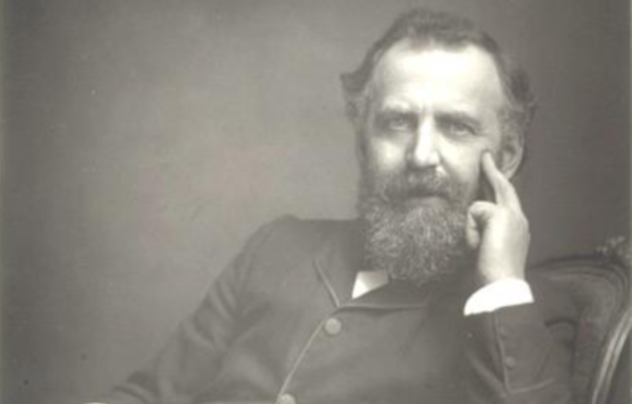
William Stead was 1 of the victims of the Titanic, and at the time, his was a proper name that was on the height of the list of the influential and powerful people that had been lost in the catastrophe. Now, sadly, he's been reduced to a footnote in any story about the Titanic.
Stead has been credited as beingness the founder of what we now call back of as investigative journalism. In 1885, his expose on child prostitutes that were living and working in the streets of London non only brought a whole new level of attention to the problem but too fix a new tone in newspapers. (Bizarrely, he was ultimately arrested for his interest in the story, as he took the child on which the story had focused away from her dwelling without her father'south consent; he spent three months in jail.)
In 1892, Stead came forwards with another bit of news: He was getting messages from the afterlife. Specifically, they were messages from dead journalist Julia Ames, and he believed in them so much that he organized an office in which women would sit, receiving letters from the Great Beyond and getting those messages to loved ones.
Regardless of anyone'due south conventionalities in the occult, he did get out behind something that was absolutely prophetic. His brusque story How the Atlantic Mail Steamer Went Down was about a Transatlantic ship that sank with devastating loss of life, because the ship only had lifeboats capable of carrying 390 of the 916 passengers that were on board. He also included a alarm that while the story was fictional, it was incredibly plausible.
iii William Wynn Westcott

Born in 1848, Westcott had an incredibly learned background. Past 1871, he was a partner in his family's medical practice and would later get the Deputy Coroner for Northeast London and Cardinal Middlesex. He was an active member of the Freemasons and the Societas Rosicruciana in Anglia. Plain, he really liked clandestine societies, and then he started his ain.
According to accustomed lore, Westcott came into the possession of some cryptic manuscripts in 1887. They were written in a lawmaking that he could, fortunately, crevice, and it turned out that they were instructions for the rites and rituals of the Isis-Urania Temple of the Gold Dawn. Supposedly there was also instructions on how to contact an "Skillful" and get permission to form the society in Britain.
The gild took off, and past 1888, in that location were several temples. Westcott himself had get the "Praemonstrator of the Kabbalah to the Isis-Urania Temple of the Chiliad.D." But, not surprisingly, the crown tended to frown on that sort of affair, and Westcott, after some of his super-secret papers had been discovered in a London cab, was forced to leave the system if he wanted to keep his job. Nevertheless, information technology flourished without him.
Even today, the organization claims that it'll help prospective members connect with other spiritual people, accomplish enlightenment, notice all the secrets of the occult in an easy, footstep-by-pace program, and be given all the secrets of "sexual abracadabra and soul ability."
two Allan Kardec
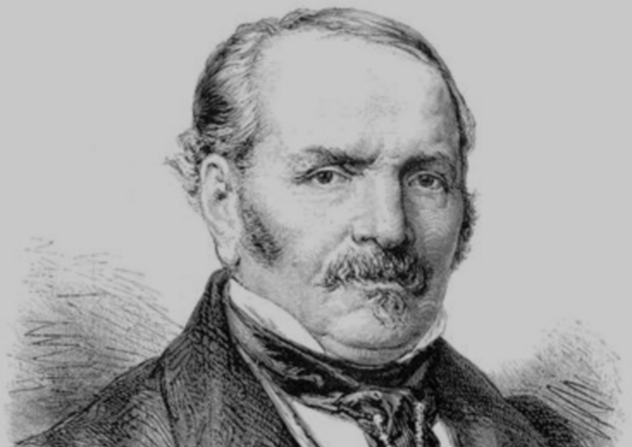
Spiritualism and Spiritism are two different things, and the latter was founded by Allan Kardec in roughly 1856. Kardec, who took his first and last names based on names he claimed he'd had in previous lives, was born Hypolyte Leon Denizard Rivial in 1804. Although he originally studied law, he disapproved of the field's intolerance, so he turned to translating textbooks and running a school for boys. By 1850, he had been completely taken with the thought of tabular array-turning, or moving objects from where they sat, and wrote his first volume based on spirits that he claimed to exist able to channel.
The Spirits' Book is notwithstanding widely available, and information technology's gone through a series of 25 editions. According to Kardec, Spiritualism was the belief in something that existed inside a person'south soul, and that's not what he was going for. His book was on spirits—actual entities that existed—and communication with them. Much of his initial interest and later proof of the spirit globe was based on the phenomenon of table-turning. In his argument, Kardec pointed out that we don't dispute that there are forces that we can't see acting on the globe around us, like the forces that crusade earthquakes, and said that his beliefs were no different.
Much of the information Kardec got about the spirit world came from mediums gifted in involuntary writing. He was optimistic that equally the mediums' noesis progressed, conversation would have been easier. Through spirit communications, he formed the basic rules that guide the interaction between the corporeal world and the spirit world.
The bodies we inhabit are temporary vessels for spirits, which be in an infinite, eternal identify. Spirits can be fabricated visible, and some can even be touched. While a spirit exists in a body, there's a tenuous link between the corporeal and the incorporeal. Kardac likewise goes into skillful and evil spirits, with the good ones belonging to the highest order and the evil ones being, essentially, the lower-class citizens of the spirit realm. Spirits are also always in a state of movement throughout the hierarchy, moving up through the ranks each time they're reborn. It'due south the spirit that dictates personality and person. Kardec also says that every time spirits are reborn, they'll find other spirits that they've known in past lives and somewhen remember connections, friendships, and past incarnations.
1 Anna Kingsford
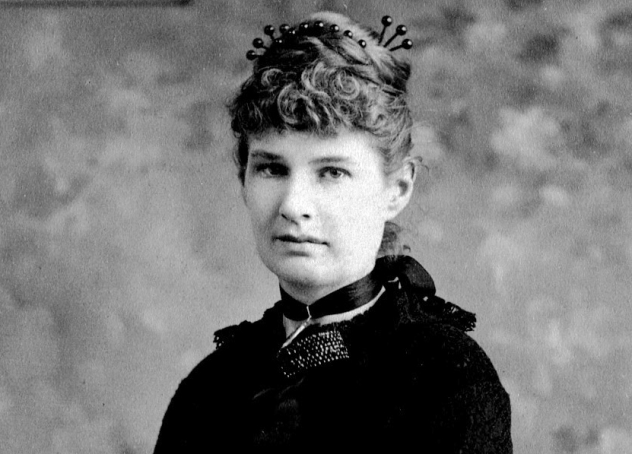
Anna Kingsford was a president of the Theosophical Society, and it'due south idea that she was i of the inspirations for the name of the mysterious German woman, Anna Sprengel, who supplied William Wynn Westcott with the documents that he claimed outlined the rules and regulations for the founding of the Golden Dawn. She'due south something of a contradictory figure, too. On one mitt, she was 1 of Great britain'due south first female doctors, and she was ane of the driving forces behind the development of an animal rights move. She also believed that she could talk to fairies, travel through time and space, and that she had channeled visions which included the creation of the universe.
The effect of these 2 very different sides of Anna's personality is that her writings are incredibly detailed, and, dissimilar a lot of writings on the occult, they remain consistent throughout. Her huge volume of work is fascinating.
In Clothed With The Sun, she touches on things similar the life of Nebuchadnezzar, the story of Persephone, the Greek gods, the trees of creation, the Christian disciples, death, sin, and life. She paints pictures of scenes every bit she says they truly were, as she'due south seen all these moments in visions.
Kingsford writes virtually some pretty baroque things, too, like a vision of walking with Jesus and being approached by a human being who could come across a person's by lives. She asks Jesus why he has come to Earth as a man instead of a adult female when, clearly, woman is the highest form of life there is. Christ answers that while he has been a woman, he has returned as a man in his current form simply on the outside, because the tasks and the life ahead of him were not suited to the body of a adult female. This is one of three reasons why a spirit can motility backward downwards the reincarnation ladder from female person to male person; another is transgressions of the spirit. He assures her that on the within, the spirit within was completely female person.
claassentrier1945.blogspot.com
Source: https://listverse.com/2015/04/18/10-mystic-spiritualists-and-occultists-from-the-victorian-era/
0 Response to "Famous British Psychics Omaha Tour Holland Performing Arts Center"
Enregistrer un commentaire